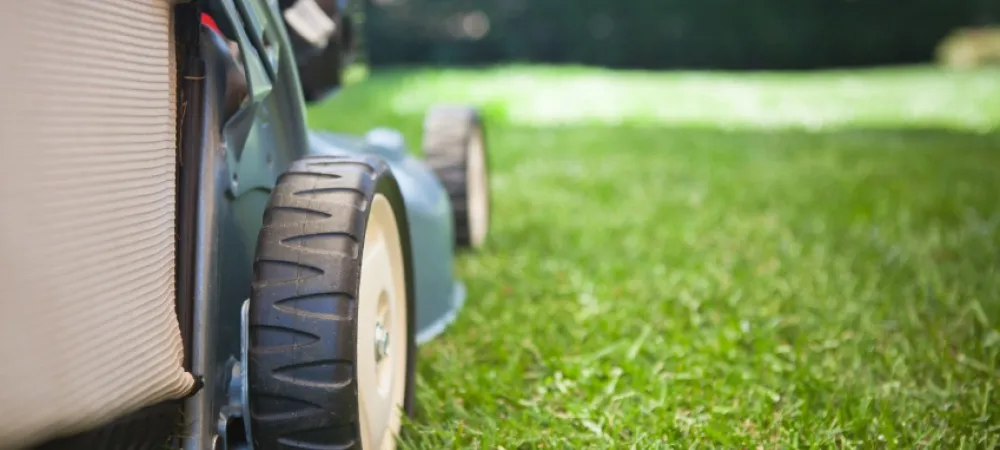
How to Protect Your Ohio Lawn for Winter: End‑of‑Year Lawn Care Tips
As the chill of November settles in across Ohio and the last fall leaves carpet your yard, your lawn needs one final season of care before winter sets in. Skip this prep and you risk a sluggish, patchy spring or worse, disease and damage from snow and ice. This guide walks you through the essential end‑of‑year tasks for your cool‑season grass in Ohio. With the right mowing, fertilising, cleanup, and soil prep now, your yard will rest strong and wake up ready in spring.
Quick Answer Box
Finish mowing at a lower height (approximately 2 to 2½ inches). Apply a root-strengthening fertilizer, remove leaves and debris, inspect the soil and drainage, and aerate if necessary. These steps protect your lawn throughout the Ohio winter and help it recover in the spring.
Why Late‑Fall Lawn Care in Ohio Matters
Cool-season grasses common in Ohio, such as Kentucky bluegrass, tall fescue, and fine fescue, don’t just lie dormant when temperatures drop. Instead, they build roots and crowns in the fall to survive winter and thrive in spring. According to the Ohio State University Extension, “Late summer and fall are great times to fertilize your lawn. As we approach winter, mowing should be at a height of 2 to 2½ inches.” And from the OSU‑Lake County fact sheet: “This month-by-month lawn care calendar is designed to help you understand lawn care and organize information so you can confidently maintain your lawn.”
In short: ignoring the fall transition means your lawn heads into dormancy weak, and that lays the ground for snow‑mold, root stress, and poor spring growth.
Step‑by‑Step: End‑of‑Year Lawn Care for Ohio Homes
In this section, we’re not just making a list; we’re walking you through a clear sequence of actions, explaining why each one matters and how it fits into the bigger goal: protecting your cool‑season lawn through Ohio’s winter and setting it up strong for spring.
1. Final Mow at the Right Height
Your lawn’s last mow for the season isn’t just about looking tidy; it influences how well the turf weathers winter. For many Ohio yards, that height should be about 2 to 2½ inches. Reducing this level to the minimum cuts down on areas where moisture can linger and decreases the risk of snow mold. After mowing, remove heavy leaf cover and large debris. When leaves accumulate, they block light and airflow, forming a damp blanket that stresses turf crowns.
2. Apply the Right Late‑Season Fertilizer for Root & Crown Health
Rather than pushing for lush green blades now (which risks disease or weak root systems), switch focus to what your turf is really doing: building roots and storing energy. Research from OSU indicates that fall fertilizing is a strong lever: “Late summer and fall are great times to fertilize your lawn.” Choose a fertilizer blend that emphasizes potassium and lower nitrogen levels, especially if you plan to apply it later in November. This supports root/crown resilience rather than top growth. If you haven’t done a soil test recently, this is an excellent moment to do so. Ohio’s clay soils and compacted zones may require pH adjustment or organic matter addition before a fertilizer shows its full benefit.
3. Comprehensive Leaf, Debris & Yard Cleanup
It’s tempting to leave leaf clean‑up for spring, but that’s risky. Leaves, twigs, and other debris do more than just look messy; they reduce sunlight, trap moisture, and create zones of fungal risk. For example, the OSU Extension states that removing leaves and debris is a key part of preparing your lawn for the colder months. Walk your entire yard, especially shaded areas, tree edges, and dips where leaves tend to accumulate, and remove or mulch the leaves so the turf base remains exposed and can “breathe.” This kind of cleanup also helps you inspect the lawn for hidden issues (bare spots, compaction, drainage problems) before winter sets in.
4. Check Drainage & Soil Condition
Winter damage often starts underground. If water pools, flows slowly, or the turf feels hard and compacted, you’re setting up the grass crown for stress. Frozen water under snow cover or ice sheets can suffocate root systems or crack turf crowns. In Ohio, it’s standard turf‑science: aeration and soil relief are timed for when the grass is still active, typically fall or spring. If you find compact zones (such as heavy foot traffic, dog runs, or shed/skid zones) or soggy areas, mark them now. Consider aeration or top‑dressing in those spots, or be ready to ask a pro to evaluate.
5. Aerate, Overseed, or Top‑Dress Where Needed
For lawns that have seen wear or thinning, the late‑fall window is often the best opportunity before true dormancy. Core aeration opens up the soil, allowing air, water, and nutrients to penetrate more deeply, and overseeding creates a stronger turf stand that competes with weeds and recovers more quickly in the spring. When choosing your seed blend, opt for a cool-season mix specifically suited to Ohio, such as a Kentucky bluegrass blend with tall/fine fescues. Make sure your seedbed has good contact with the soil. Skip this step and you’re essentially gambling that your lawn will recover on its own, but with less margin for error.
Take the time now to plan: identify bare patches, decide whether you’ll DIY or hire equipment/services, and schedule accordingly.
6. Equipment & Service Scheduling Prep
The equipment you use and timing matter. A dull mower blade or a clogged deck from drained leaves can tear turf rather than cleanly cut it, weakening the grass before winter. Clean your deck, sharpen your blade, and store or cover your gear properly if you’re done for the season. Also, clear the area around the machine to prevent leaves from building up under the deck. If you’re scheduling a professional service (late‑season fertilization, aeration, overseeding), NOW is the time. Many Ohio lawn‑care companies book early for winter/early‑spring windows; waiting too long may lock you out or raise costs.
Comparison: DIY vs Professional vs Hybrid Packages
Now that you understand the essential steps to protect your lawn this fall, it’s important to consider how you want these tasks handled, whether on your own, with professional help, or a mix of both
DIY Route
- Pros: Lower cost, direct control.
- Cons: Timing mistakes, wrong product selection, and missing root/soil issues, especially in Ohio, where soils and shade vary.
- Best if: You have a small yard, know your soil, and don't mind doing the labour.
Full Professional Service
- Pros: Expertise (soil testing, correct seed blends, equipment), less risk of winter damage.
- Cons: Higher cost, less hands‑on control.
- Best if: You have a large yard, heavy use, drainage/compaction issues, or prefer “set it and forget it”.
Hybrid Approach
- Pros: You handle simple tasks (leaf cleanup, mowing) and the contractor handles technical parts (soil testing, late fertilizing, aeration/seed).
- Cons: Requires coordination but balances cost and quality.
- Best if: You’re comfortable managing part of the job, but want professional assurance on high-impact steps.
For many Ohio homeowners, the hybrid approach offers the best ROI: you handle routine tasks; let the pros ensure root health and soil prep are done right.
Prevention Tips: Long‑Term Lawn Health Through Ohio Winter
- Remove leaves before snow arrives; don’t wait until spring.
- Maintain mowing height of ~2 to 2½ inches for the last cut; then reduce foot‑traffic once dormancy sets in.
- Avoid high-nitrogen fertilizer after mid-November, as excess top growth invites problems.
- Have soil tested every 3‑5 years (Ohio soils often require lime or organic matter).
- Do not pile snow, park equipment, or store heavy items on turf. Compacted snow encourages snow-mold damage.
- Repair or redirect standing water/drainage issues now; freeze/thaw cycles under snow will hurt lawn crowns.
- Book your late-season service (aeration, overseeding, fertilizing) now to secure scheduling before the weather or service backlog jumps.
When to Call the Lawn Care Professionals
If your lawn shows persistent problems, large bare areas, serious compaction or drainage issues, or if you haven’t had a soil test in years, this is when hiring the experts at Dyna-Green makes strategic sense. Their team has experience with Ohio-specific turf issues and can apply the right late-season treatments, soil tests, and equipment, so you’re not left guessing.
If you prefer to let someone else handle the timing, equipment, and technical decisions, especially in November when weather windows narrow, consider connecting with Dyna-Green to schedule your late-season fertilization, aeration, or overseeding service. Having a pro on your side means your lawn doesn’t just survive winter, it’s prepped to come back healthier and stronger in spring.
Secure Your Ohio Lawn’s Winter Survival
Your Ohio lawn doesn’t automatically reset for spring; it needs smart late‑fall care to survive winter and recover strong. By mowing to the right height, applying the correct fertilizer, clearing leaves, checking soil and drainage, and deciding whether DIY or professional help makes sense, you’re setting your yard ahead of the pack.
Ready to secure your lawn’s winter survival and spring success? Contact Dyna‑Green today to schedule your late‑season fertilization, soil test & improvement, or aeration + overseeding service. Let us give your lawn the protection it needs now so it doesn’t get caught off guard in spring.
Sources
- Ohio State University Extension. Fall Lawn Care – Putting Your Lawn to Bed for Winter. BYGL, 21 Nov. 2023, https://bygl.osu.edu/node/2400
- Ohio State University Extension. Lawn Care Calendar for Northeastern Ohio. Lake County Extension, https://lake.osu.edu/sites/lake/files/imce/Program_Pages/ANR/FS%20101%20Lawn%20Care%20Calendar.pdf

